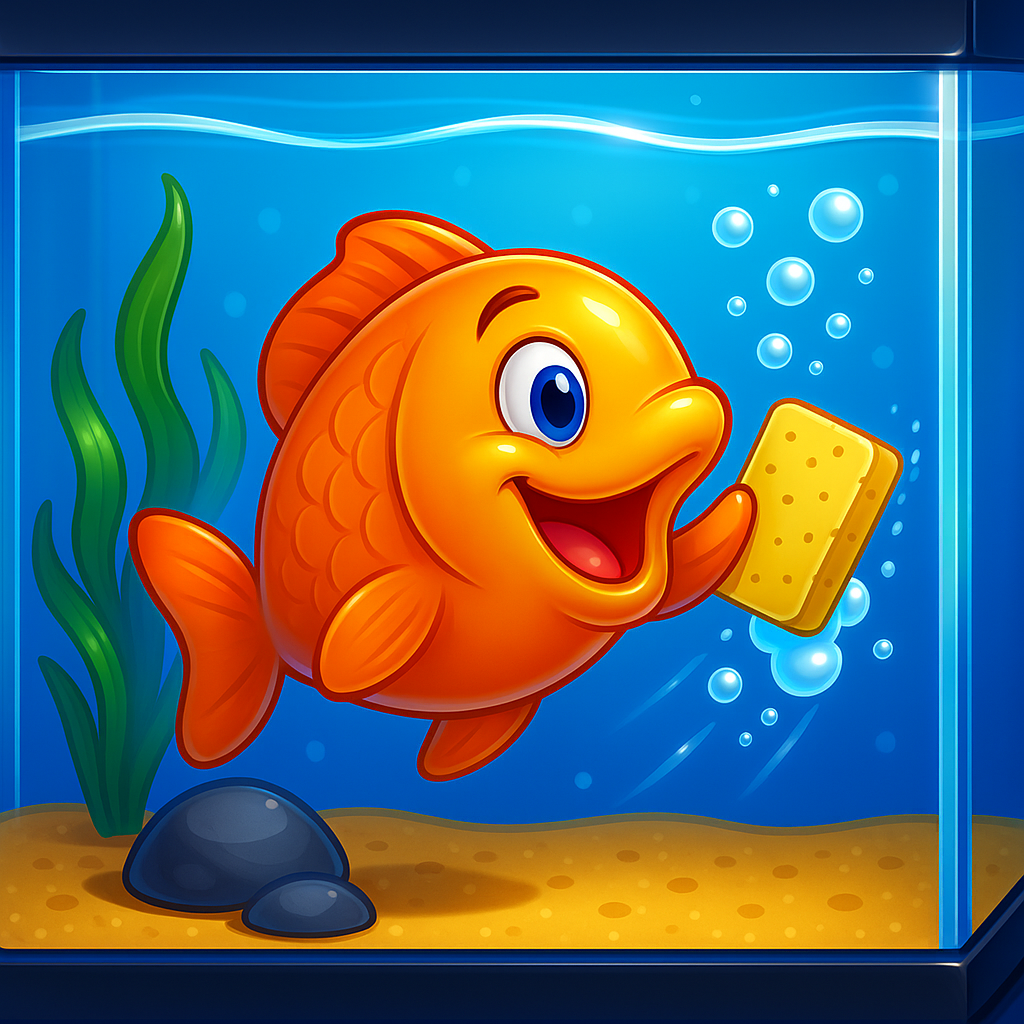Glass & Substrate Maintenance Guide
🪟 Glass & 🪣 Substrate Maintenance Guide
🧠 Why These Matter
- Glass cleaning = visibility + algae control. Neglect → light blocked, pH/CO₂ shifts, bacteria layers.
- Substrate cleaning = waste removal, nitrate/phosphate control, prevents anaerobic gas pockets.
- Both reduce pathogen load and keep your fish stress-free (especially rays, plecos, and cichlids that produce lots of waste).
🪟 Glass Cleaning in Depth
🔹 Daily Micro-Maintenance (30–60 sec)
- Run a magnet cleaner over the front panel after lights-on.
- Benefits: algae doesn’t establish → saves you scrubbing sessions later.
🔹 Every 2–3 Days
- Magnet pass on all visible panes.
- Rotate angle to catch corner seams and behind filter outflows.
🔹 Weekly Deep Clean
- Plastic blade/algae pad for stubborn green spot algae.
- Use credit card edge or razor (glass tanks only) for coralline/spot algae.
- Detail behind wood, intake pipes, and in low-flow areas.
🔹 Monthly “Wall Service”
- Clean back panel and hidden sides.
- Toothbrush scrub on driftwood surfaces and rock faces that collect fuzz algae.
- Optional: scrub heater, thermometer, and tubing to restore efficiency.
⚠️ Special Notes
- Planted tanks: avoid removing all algae — some periphyton = natural graze for plecos/otocinclus.
- Acrylic tanks: use acrylic-safe pads only — scratches are permanent.
- Algae imbalance (fast regrowth ≤24h) → check phosphate/nitrate balance & lighting period, not just glass.
🪣 Gravel / Sand Vacuuming in Depth
🔹 Gravel Systems (medium–coarse)
- Weekly A/B pattern: vacuum half the footprint each week.
- Every 2 weeks: cover the other half → bacteria preserved, mulm still removed.
- Monthly: lift/tilt major driftwood/rocks carefully → vacuum underneath.
Technique:
- Insert siphon bell ~5 cm down.
- Lift–drop rhythm to pull mulm without stripping all gravel bacteria.
- Prioritize feeding zones, caves, under returns.
🔹 Sand Systems (fine sand, stingrays, geophagus, planted with sand cap)
- 2× per week (heavy rays/plecos): hover siphon 1–2 cm above sand.
- Weekly (moderate loads): single hover pass across main zones.
- Monthly: gentle finger/card stir along tank edges, corners, and under decor to release trapped gas.
Technique:
- Keep siphon above sand, let detritus “snow” lift in.
- Use wide-bore siphon (better lift, safer for rays).
- Fan surface lightly with hand/turkey baster to suspend waste.
Cautions:
- Never jam into sand in ray tanks — risk disc abrasions + collapse of anaerobic layers.
- Planted tanks: avoid uprooting stems; skim surface only.
📊 Frequency by Tank Type
| Tank Type | Glass | Substrate | Notes |
|---|---|---|---|
| Heavy Plecos / Monsters | Front daily, sides 2–3×/week, weekly detail | Gravel: A/B weekly • Sand: hover 2×/week | Massive waste → extra siphon around feed zones |
| Stingrays (sand) | Front 2×/week, detail weekly | Hover sand 2×/week, spot siphon poop daily | Wide hose, never pin disc, leave open floor |
| African Cichlids (Mbuna, Tanganyika) | 2×/week | Gravel weekly A/B; blow detritus from rock piles first | Add wavemaker for mulm lift |
| South American Cichlids (Geos, Oscars) | 2×/week | Sand hover weekly; stir corners monthly | Oscars messy eaters → vacuum feed pit daily |
| Planted High-Tech | Light magnet 1–2×/week | Skim surface only (avoid root zone) | Turkey baster around roots |
| Community Moderate | Front 2×/week | Gravel: A/B every 1–2 weeks • Sand: hover weekly | Adjust based on nitrate slope |
📈 Indicators You Need to Clean Sooner
- Glass film back <48 h → algae imbalance.
- Cloud when decor is bumped → substrate mulm-heavy.
- pH sag between changes → excess organic load.
- Musty odor → decaying waste in substrate.
- Fish behavior: plecos rasping only on glass, rays resting on “dirty” patches, or corys constantly surfacing for air.
🧯 Safety & Workflow Tips
- Never deep vacuum + full canister clean same day → stagger by 3–7 days to protect nitrifiers.
- Prefilter sponges: rinse 2–3×/week, they trap most mulm before it settles.
- Feeding tiles for rays/plecos: lift & vacuum that tile every session → controls most waste quickly.
- Rock piles: powerhead/turkey baster blast before siphon.
- Driftwood undercuts: check monthly → detritus hotspot.
- Stirring sand: do small zones each time instead of the whole bed → safer gas release.
⏱️ Example Weekly Rhythm
Monday → Quick glass front (1 min magnet)
Tuesday → Substrate A-side vacuum + 30–50% WC
Wednesday → Glass full pass; baste rocks/wood with turkey baster
Thursday → Rest day / feeding only
Friday → Spot vacuum feeding area; quick glass
Saturday → Substrate B-side vacuum + 30–50% WC
Sunday → Back/side wall scrub + equipment wipe
✅ Bottom line:
- Glass: front daily / sides 2–3× weekly / detail weekly / deep monthly.
- Gravel: A/B vacuum weekly.
- Sand: hover 1–2× weekly, stir corners monthly.
- Adjust by nitrate slope, detritus load, and fish behavior.

Powered by Lightspeed
Display prices in:USD